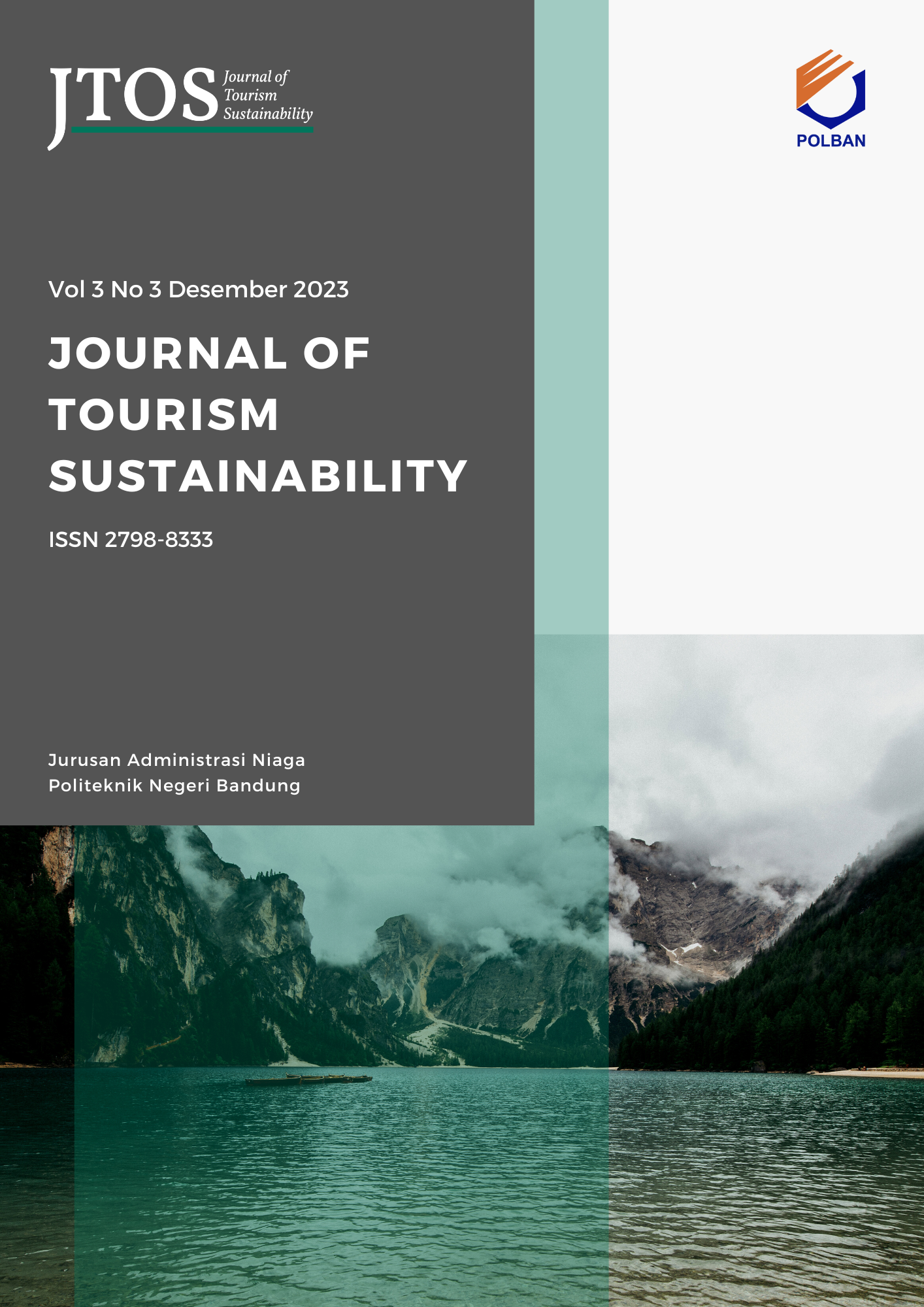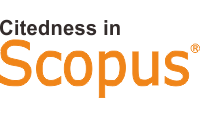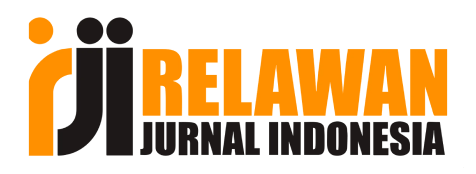The Development of Campervan Ground at Madasari Beach
DOI:
https://doi.org/10.35313/jtospolban.v5i1.144Keywords:
Campervan, Development, Tourist Attraction, Madasri BeachAbstract
Madasari Beach is one of the beaches located in Pangandaran Regency, West Java. The development of campervans is currently very popular globally and internationally, especially after the pandemic. This means the purpose of the research is to develop a campervan ground site at Madasari Beach. This research uses a qualitative research approach with an exploratory descriptive research type. Data collection techniques that use observation, interviews, documents, and archives. Analyzed with an interactive analysis model where activities in qualitative data analysis are carried out interactively and continuously until completion. This research uses QGIS, AutoCAD, and SketchUp in planning the development of campervan ground tourist attractions, and designs the development of the existing campervan ground tourist attraction area by not changing the state of the field too much. In the design, some things such as existing vegetation around, existing roads in related tourist attractions, and main roads leading to or passing through related tourist attractions are maintained. This research concludes that there are several things to consider, such as community participation, user comfort, and natural preservation that are considered. However, there needs to be further research related to tourist attractions, especially based on the point of view of tourism attraction management.
References
Amin, S., & Siaahan, K. (2016). Arsip Berbasis Web Pada Sekolah Tinggi Ilmu Tarbiyah.
Annida, S. B., Riyanti Rahmawati, & Faqih Baihaqi. (2024). Potential and Development of Marine Tourism at Madasari Beach Pangandaran District, Indonesia. International Journal of Contemporary Sciences (IJCS), 1(9), 463–470. https://doi.org/10.55927/ijcs.v1i9.10409
Attri, V. N. (2018). The Role Of Marine Tourism In Iora: The Pathways Ahead. 3rd Tourism Experts Meeting for the Establishment of the IORA Core Group on Tourism, 1–112.
Benson, C. H., & Bradshaw, S. (2011). User Guideline for Foundry Sand in Green Infrastructure Construction.
Bungin, B. (2013). Metode penelitian sosial & ekonomi: format-format kuantitatif dan kualitatif untuk studi sosiologi, kebijakan, publik, komunikasi. Kencana Prenada Media.
Butler, R. W. (1980). The Concept of A Tourist Area Cycle of Evolution: Implications for Management of Resources. Canadian Geographer / Le Géographe Canadien, 24(1), 5–12. https://doi.org/10.1111/j.1541-0064.1980.tb00970.x
Dinas Pariwisata dan Kebudayaan Provinsi Jawa Barat. (2023). Jawa Barat Dalam Angka. Dinas Pariwisata dan Kebudayaan Provinsi Jawa Barat.
Dinas Pariwisata Pemuda dan Olahraga Kabupaten Pesisir Selatan. (2017). Konsep Pengembangan Kawasan Wisata Bahari.
Dino, D. K., & Sofianto, M. F. (2021). Kelayakan Media Pembelajaran CAD 3D Modeling Struktur Rangka Atap. Jurnal Kajian Pendidikan Teknik Bangunan (JKPTB), 7(1).
Febriyan, G. E. (2017). Peranan Sekolah Dalam Menanggulangi Perilaku Menyimpang Siswa di Sekolah Menengah Pertama Negri 13 Kota Magelang. Universitas Negeri Yogyakarta.
Hoff, M. T., & Dolton, B. D. (1988). United States Patent: Van Camper.
Human, D. (1980). United States Patent: Caravan or Campervan Construction.
International Labour Organization. (2010). Developments and Challenges In The Hospitality and Tourism Sector. Global Dialogue Forum for the Hotels, Catering, Tourism Sector. International Labour Organization Publications.
Ismunandar, R., & Adistana, G. (2020). Studi Terhadap Media Pembelajaran 3D Sketchup Dalam Meningkatkan Hasil Belajar Peserta Didik. Jurnal Kajian Pendidikan Teknik Bangunan, 6(2), 1–6.
Junaid, I. (2018). Pariwisata Bahari: Konsep dan Studi Kasus (1st ed.). Politeknik Pariwisata Makassar.
Kearsipan, Pub. L. No. 43, Pemerintah Republik Indonesia (2009).
Kementrian Pariwisata dan Ekonomi Kreatif. (2025). Camping Ground. Jadesta Kemenparekraf. https://jadesta.kemenparekraf.go.id/atraksi/camping_ground
Litman, T. (2019). Evaluating Accessibility for Transport Planning: Measuring People’s Ability to Reach Desired Goods and Activities. Victoria Transport Policy Institute.
Mariati, S., Gilitasha, A., Rahmanita, M., Djati, S. P., & Adawiyah, R. (2023). Analysis of Sustainable Tourism Destination Development for Digital Nomads (Comparative Study: Lisbon-Portugal and Canggu, Bali-Indonesia). Technium: Social Sciences Journal, 42, 403–415. www.techniumscience.com
Mowforth, M., & Munt, I. (2009). Tourism and Sustainability Development Globalisation and New Tourism in The Third World. Routledge.
Novianti, F. E., & Dirgantara, P. (2024). Campervans Community Lifestyle in Bandung: A Case Study in Environmental Communication. Jurnal Teknologi Informasi Dan Komunikasi, 8(2), 427–433. https://doi.org/10.35870/jti
Orams, M. B. (1994). Tourism and Marine Wildlife: The Wild Dolphins of Tangalooma, Australia: A Case Report. Anthrozoös, 7(3), 195–201. https://doi.org/10.2752/089279394787001899
Özge, A. (2021). Camp and Caravan Tourism. In V. Krystev, S. Ç. Uğuz, R. EFE, & E. Kapluhan (Eds.), Tourism Studies and Social Sciences (pp. 239–253).
Pearce, P. L., & Wu, M.-Y. (2017). A Mobile Narrative Community: Communication Among Senior Recreational Vehicle Travellers. Tourist Studies, 18(2), 1–9. https://doi.org/10.1177/1468797617723469
Pengelolaan Sempadan Pantai Dan Sempadan Sungai, Pub. L. No. 80, Pemerintah Kabupaten Pangandaran (2022).
Prahasta, E. (2002). Konsep - Konsep Dasar Sistem Informasi Geografis. Informatika Bandung.
Prihadi, D. J., Annida, S. B., Kristiadhi, F., Dhahiyat, A. P., & Junirahma, N. S. (2024). Development Strategy of Madasari Beach Marine Tourism, Pangandaran Regency, Indonesia. Formosa Journal of Multidisciplinary Research, 3(1), 221–232. https://doi.org/10.55927/fjmr.v3i1.7954
Regulation on Tourism Facilities, Republic of Türkiye Ministry of Culture and Tourism (2019).
Rencana Tata Ruang Wilayah Kabupaten Pangandaran Tahun 2018 – 2038, Pub. L. No. 3, Pemerintah Kabupaten Pangandaran (2018).
Sari, R. J., & Suarmana, I. R. (2022). Trends of Nomadic Tourism Using Campervan as A Tourism Attraction for Millenials to Travel In Bali. Tourism Research Journal, 6(2), 248–256.
Sugiarto. (2017). Metodologi Penelitian Bisnis. ANDI.
Sugiyono. (2013). Metode Penelitian Kuantitatif, Kualitatif dan R&D (19th ed.). ALFABETA.
Sugiyono. (2020). Metode Penelitian Kualitatif. Alfabeta.
Sutopo, H. B. (2006). Metodologi Penelitian Kualitatif (Dasar Teori dan. Terapannya Dalam Penelitian). Sebelas Maret Press.
Tohirin, M. (2013). Metode Penelitian Kualitatif dalam Pendidikan dan Bimbingan Konseling : Pendekatan Praktis untuk Peneliti Pemula dan Dilengkapi dengan Contoh Transkrip Hasil Wawancara serta Model Penyajian Data.
United Nation World Tourism Organization. (1998). Guide for Local Authorities on Developing Sustainable Tourism (1st ed.). United Nation World Tourism Organization.
United Nation World Tourism Organization. (2005). Sustainable Development. United Nation World Tourism Organization. https://www.unwto.org/sustainable-development
Upskill. (2024). Sustainable Tourism Guidelines. Upskill.Study. https://upskill.study/sustainable-tourism
V.P, N., Srivastava, A., & Das, B. K. (2023). Identification of tourism potential of Vagamon for Caravan park Identification of Tourism Potential of Vagamon (Idukki, Kerala) for Caravan Park. https://www.researchgate.net/publication/369659770
Wilson, S. (2018). VW Campervan Subculture: Tourism Mobilities and Experiences (Indonesia, Trans.).
Downloads
Published
Issue
Section
License
Copyright (c) 2025 Taqiy Gusdi Baitulloh, Atikah Nurhayati, Donny Juliandri Prihadi, Ahmad Prawira Dhahiyat, Mohamad Candra W. Arief

This work is licensed under a Creative Commons Attribution-NonCommercial-ShareAlike 4.0 International License.



.png)

















